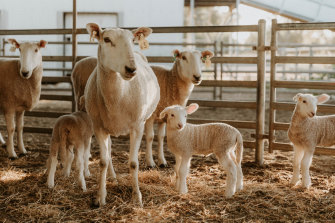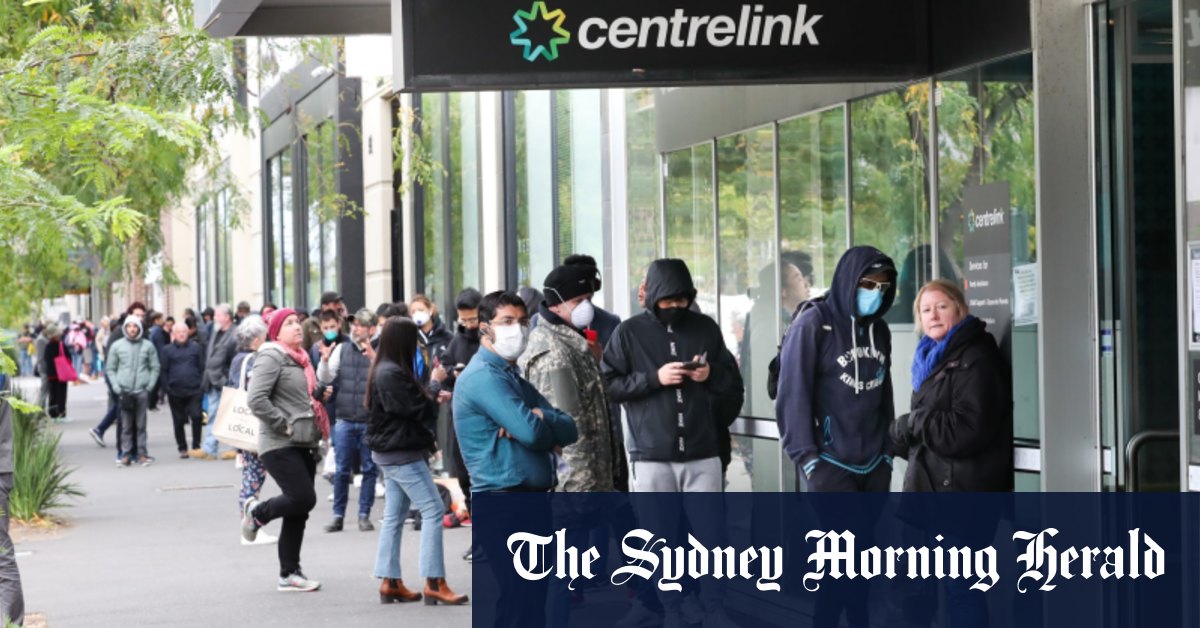The single largest recipient of JobKeeper was Victoria’s cafe, restaurants and takeaway food service sector which shared $1.6 billion to support up to 60,616 people.
loading
In NSW, more than 15,500 management and consulting services received $1.1 billion through the pandemic.
The data also showed how the farm sector dipped into JobKeeper.
Across rural NSW, more than 9,300 sheep, beef and grain-producing businesses were paid $325 million in JobKeeper. By number, the sector was the 20th largest out of the more than 900 tracked by the ATO.
That was more than double the 4014 sheep, beef and grain producers in Queensland who received $150.4 million. Another 3024 in Western Australia were paid $119 million; 2756 in Victoria received $84.5 million, while across South Australia 1838 producers were given $66.8 million.

Sheep, beef and grain producers in NSW received more than $325 million in JobKeeper through the pandemic.Credit:nicole mcguire
Through the early stages of the pandemic, abattoirs and meat processors struggled to stay open, which then affected the supply of meat to the nation’s supermarkets.
Farmers, particularly in NSW and Queensland, were also either drought or bushfire affected and starting to rebuild their herds and flocks.
Outside traditional mixed farming enterprises, JobKeeper was also used by 384 dairy farmers, nine deer producers, all in Victoria, 1693 mushroom and vegetable growers and 2673 fruit and tree nut orchardists.
National Farmers Federation chief executive officer Tony Mahar said Job Keeper had been pivotal to farmers through the pandemic.
“Prices for many farm commodities slumped as the pandemic hit. JobKeeper was able to support a significant number of farm businesses who in turn kept rural economies turning over,” he said.
“It allowed some farmers to keep hold of trained staff, which was hugely valuable as the worker shortage went from bad to worse.”
Earlier this year, the Auditor-General said both the Treasury and the tax office had overseen the program to a high standard. But Labor raised concerns about how up to $20 billion was paid to businesses that actually increased their turnover during the pandemic.
The ATO data, which covers the 2019-20 financial year, also shows how much money young Australians took out of their superannuation nest eggs during the pandemic.
The federal government enabled people to withdraw up to $20,000 from their super if they found themselves in financial hardship because of the pandemic. Concerns emerged early that people were using the scheme without their claims of hardship being properly tested.
loading
Early analysis of the superannuation access scheme showed about a third were under the age of 30.
The data shows people with the smallest super accounts, people aged between 18 and 24, took out the largest share of money. Men in this age group had a 22.1 per cent fall in their median super accounts while among women the fall was 21.1 per cent.
Both ended 2019-20 with a median balance of about $3,150.
Among 25- to 29-year-olds, the account balances of men fell by 10.3 per cent to $14,643 while among women it fell to $14,666.
Balances among 30- to 34-year-olds dropped by 8 per cent for men and women, although the gap between the sexes had grown. The median balance for a man was $35,673 while for a woman it was $33,081.
Men a decade older had a median balance of $91,642 while for women that age it was $78,750.
Cut through the noise of federal politics with news, views and expert analysis from Jacqueline Maley. Subscribers can sign up to our weekly Inside Politics newsletter here.
